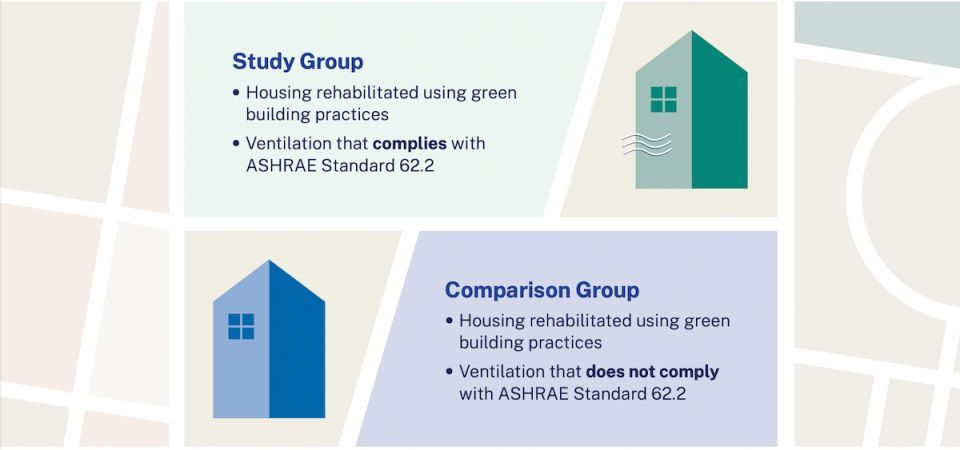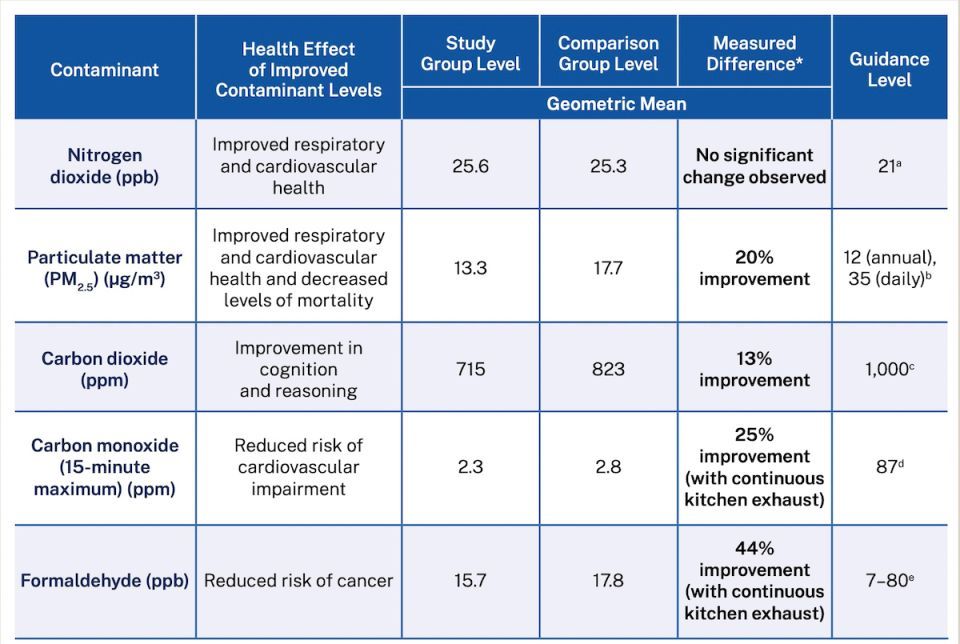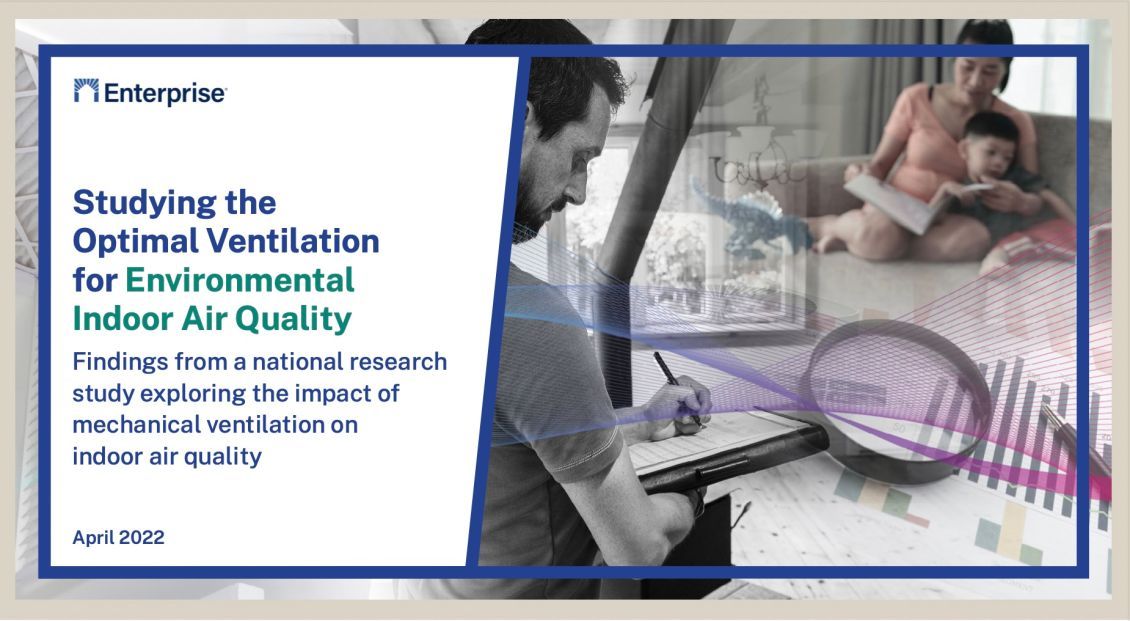For decades, discriminatory housing policies in the United States reinforced neighborhood segregation and disinvestment in communities of color. The practice, known as redlining, also meant infrastructure that increased air pollution—industrial plants, major roadways and more—was disproportionately placed in communities of color. The impacts of these decisions live on: one study found that today, 45 million Americans live in previously redlined communities with polluted air.
Levels of pollutants found indoors can be even higher than the outdoor levels if a home is not properly ventilated. Due to the COVID-19 pandemic, Americans are spending nearly 25 percent more time at home, compounding the potential health risk from high levels of indoor air pollution. Addressing the legacy of environmental racism requires investing in homes that protect residents from the health consequences of poor air quality.
A new study from Enterprise and the National Center for Healthy Housing found that installing continuous mechanical ventilation systems in multi-family homes significantly reduced the presence of harmful airborne particles that contribute to respiratory and cardiovascular illness. The study informed a series of recommendations to improve indoor air quality in housing across the country, and particularly among the low-income communities most impacted by environmental racism.
In this Q&A, Stephany De Scisciolo, Enterprise’s vice president of impact, evaluation and population health, breaks down the findings of the study, why they matter and where we go from here.
Q: Why did you decide to measure the impact of ventilation?
A: Studying the Optimal Ventilation for Environmental Indoor Air Quality was born out of Enterprise’s Green Communities work. Green housing directly impacts the health and wellness of residents and helps to protect the environment. Mechanical ventilation systems use fans and ductwork to replace stale indoor air with fresher air from the outdoors. Continuous mechanical ventilation ensures there is a constant source of fresher air that prevents the build-up of harmful pollutants.
Despite the importance of these systems for resident health, many affordable housing developers face difficulty in incorporating mechanical ventilation into rehabilitations of existing buildings, primarily due to cost or the complexity in meeting industry standards. By demonstrating the difference these systems can make in the quality of the air that we breathe in our homes, and their potential to impact resident health, we hope to push the industry to incentivize and support broader implementation in a way that ensures people in all types of communities benefit from good indoor air quality. This can create significant public health benefits and help address persistent health disparities faced by low-income communities.
Q: How was this study conducted?
A: Certain benefits of green building had been studied previously, but most of the available research had been conducted at a single site with a small number of participants. Our study took this further: it included more than 150 homes and incorporated several different types of multi-family housing located in two cities—New York and Chicago. We focused on demonstrating how continuous mechanical ventilation impacted the levels of common indoor air pollutants, which was something that had not been done before in affordable housing at this scale. All of the housing included in the study was considered “green housing” so that we were able to specifically measure the impact of ventilation on indoor air quality.

Q: What most surprised you about the findings of the study?
A: The findings confirmed that mechanical ventilation works, as homes with continuous mechanical ventilation systems had lower indoor air pollutant levels than those without these systems. We were surprised by just how effective they were for certain pollutants: small particulate matter, known as PM2.5, was reduced by 20 percent, a significant decrease. If all multifamily housing in the United States were able to install continuous mechanical ventilation systems, the resulting decrease in indoor PM2.5 alone would likely save nearly 15,000 people annually who would otherwise have died from complications due to respiratory or cardiovascular illness.
We were also surprised by what continuous mechanical ventilation doesn’t do. The study found that these systems do not significantly reduce the presence of indoor nitrogen dioxide, which primarily comes from gas stoves. In our view, this adds more evidence to the need to switch from gas stoves to electric—even continuous ventilation systems are not enough to counteract the negative health effects of these appliances.

Q: Where do we go from here?
A: We must make it a priority to bring the health benefits of continuous mechanical ventilation to more homes. This is an equity issue: lower-income communities and communities of color are more likely to live in neighborhoods with poor air quality, or in older homes that disproportionately expose them to the adverse health effects of harmful indoor air.
Our industry must make it feasible for affordable housing owners to incorporate continuous mechanical ventilation systems in the construction process, especially for the renovation of existing properties. Our study’s recommendations include incorporating a standard for mechanical ventilation into all green building standards, building codes and tax credit requirements; ensuring programs that finance housing rehabilitation budget for the cost of installing these systems; replace gas stoves with electric; and invest in more public education about indoor air quality, among others.
The importance of green building to the health of all Americans can’t be understated. The public and private sectors must come together to ensure the legacy of redlining no longer impacts the health and well-being of communities of color. Our study provides a path forward toward improving the indoor air quality for millions of our fellow citizens. A healthier America is within our reach—if we are willing to invest to ensure that the benefits of green building are accessible to all.
